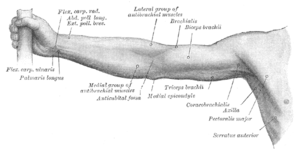
Inge-Marie Velstra, MSc, OT etal writing in PM&R on September 2011 provides information regarding the (1) responsiveness and reliability of different outcome measures used with persons who have impairments in upper extremity function and (2) their content validity based on the International Classification of Functioning, Disability, and Health (ICF).
MEDLINE, CINAHL, PsycINFO, and EMBASE databases were systematically searched for studies on outcome measures used to evaluate upper extremity function; only studies written in English and published between July 1997 and July 2010 were considered.
One investigator reviewed titles and abstracts of the identified studies to determine whether the studies met predefined eligibility criteria (eg, study design, age <18 years). Another investigator did the same for 70% of the studies.
All types of outcome measures in the included studies were extracted, and the information retrieved from these outcome measures was linked to the ICF by 2 independent investigators who used standardized linking rules. In addition, studies reporting the clinical responsiveness, interrater reliability, and test-retest reliability of the outcome measures were identified.
From among the 894 studies that were included in this review, 17 most frequently used outcome measures in the different study populations were identified. Five were patient-reported outcome measures and 12 were clinical outcome measures. The outcome measures show large variability with regard to the areas of functioning and disability addressed. Reliability and responsiveness data are missing for a few outcome measures or for certain populations for which they have been used.
This systematic review provides an overview of the outcome measures used to address functioning and disability as they are related to the upper extremity. The results of this study may help clinicians and researchers select the most appropriate outcome measure for their clinical population or research question according to ICF-based content validity, and additional information on the reliability and responsiveness of the measures is provided. Our findings also can provide directions for further research.
The ArmTutor™ system has been developed to allow for functional rehabilitation of the upper extremity. The system consists of an ergonomic wearable arm brace and dedicated rehabilitation software. The ArmTutor™ system allows for a range of biomechanical evaluation including speed, passive and active range of motion and motion analysis of the upper extremity. Quantitative biomechanical data allow for objective evaluation and rehabilitation treatment follow up. The ArmTutor™ rehabilitation concept is based on performing controlled exercise rehabilitation practice at a patient customized level with real time accurate feedback on the patient’s performance. The exercises are designed in the form of challenging games that are suitable for a wide variety of neurological and orthopedic injury and disease.
The games challenge the patient to perform the exercise task to their best ability and to continue exercise practice.
The ArmTutor™ allows for isolated and a combination of elbow and three directional shoulder treatment. The system provides detailed exercise performance instructions and precise feedback on the patients exercise performance. Controlled exercise of multijoints within the normal movement pattern prevents the development of undesired and compensatory joint movement and ensures better performance of functional tasks.
The ArmTutor™ system is used by many leading rehabilitation centers worldwide and has full FDA and CE certification.
No comments:
Post a Comment